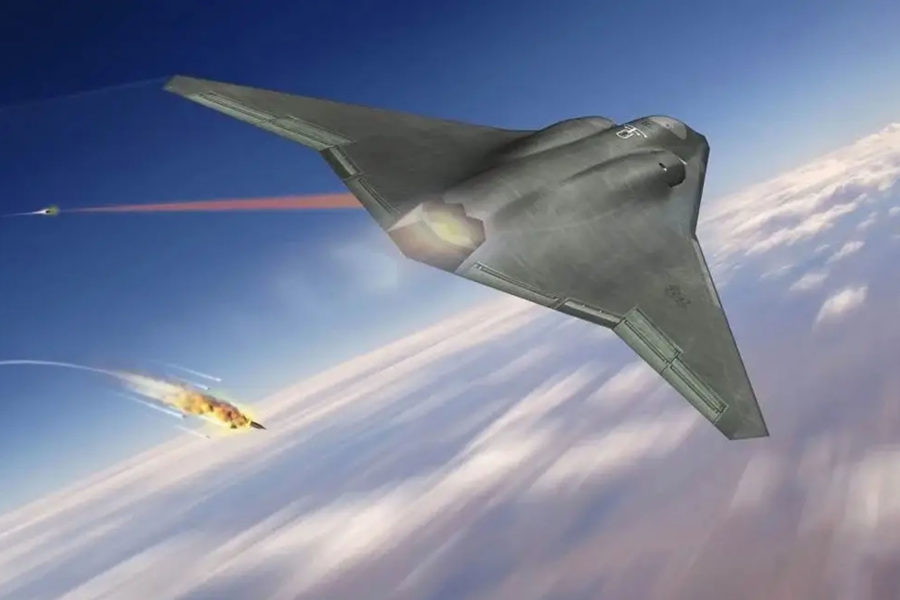The Air Force’s request for funding for the Next Generation Air Dominance program is slashed nearly a third—some $550 million—in the House Armed Services Committee chairman’s mark of the 2024 National Defense Authorization Act.
But while the amount of the reduction roughly matches what the Air Force has said it is pulling out of the F-22 program to fund NGAD, the draft NDAA doesn’t appear to put that $550 million directly back into the F-22.
Instead, the bill notes the $550 million as a “deferment” from the Air Force’s $2.326 billion request for NGAD. No further explanation was provided, and a spokesperson for chairman Rep. Mike Rogers (R-Ala.) did not immediately respond to a request for comment. The fact that it’s described as a deferment suggests the funds may be shifted to a later year.
The full committee will meet to vote on amendments and approve the NDAA on June 21.
In mid-May, the Air Force said it was starting the clock on the NGAD contractual effort, issuing a request for information to industry expected to culminate in the selection of a contractor next year.
Meanwhile, the Air Force has also asked Congress to let it retire 32 Block 20 F-22s, which have been used for training and which the service says are the most expensive aircraft in the fleet to maintain.
The Air Force made a similar request in the 2023 budget, and Congress instead passed a provision prohibiting the service from retiring any Raptors until October 2027. The 2024 chairman’s mark does not change that requirement, and HASC members have voiced concerns the Air Force is reducing its “fight tonight” combat capacity too much to pay for future capability, suggesting they are once again unwilling to let the F-22s be mothballed.
Air Force Secretary Frank Kendall has responded that there is no time to spare in developing and fielding the NGAD, as Chinese fifth-generation fighters are advancing in capability. He said the reduction of the F-22 fleet to increase NGAD development accounts is a calculated risk, but one he is comfortable taking.
In April, Air Force deputy chief of staff for plans and programs Lt. Gen. Richard Moore Jr. broke with the tradition of not describing to Congress the specific dollar tradeoffs between budget items. He told the HASC tactical aviation panel that the funds saved by not operating the 32 F-22s would remain within the air dominance portfolio and go directly into NGAD.
At a Mitchell Institute for Aerospace Studies event a few days later, Moore said it costs $485 million per year simply to operate the 32 Block 20 Raptors, and that figure would not cover upgrades and new equipment needed to bring those aircraft up to date against known and predicted threats. The Block 20s have been used for training and lack many of the improvements on the combat-coded Block 35 F-22s.
To bring the Block 20s up to Block 35 would cost an extra $3.5 billion, Moore said, adding that it would not be a worthwhile investment because the F-22 is slated to retire circa 2030, and it would take years to build up the industrial capability needed to develop and install the upgrade.
In fact, Moore said, the Block 35s themselves already need to be upgraded. Lockheed Martin, the prime contractor for the F-22 and F-35, has a limited number of engineers, he said, and “if we were to stand up an effort like this, it would be reasonable to expect they would have to pull some engineering talent off of F-35 … to get this accomplished.”
A HASC member staffer would not speak directly to the NGAD cut, but noted the law prohibiting any retirement of F-22s is still in effect. He said the Block 20s could still be “very capable in some theaters” and if they are stood down, the Block 35s would have to fill the training role and that means “more wear and tear on them.” Air Force officials have said, though, that the Block 20s and Block 35s are so dissimilar that pilots are acquiring bad habits in the older jets.
The staffer’s only comment regarding NGAD was to note that it’s still in “a very early stage” and “we have some time to adjust that program.” He also noted that there may be some overlap”with the Collaborative Combat Aircraft program, and that effort got a roughly 50 percent boost in the chairman’s mark, from $118.8 million to $176.1 million.
If Congress continues to block the divestiture of the older F-22s and the Air Force is obliged to keep operating them, Moore has claimed, “that’s a half-billion dollars of something else that won’t get done.”
The draft NDAA did not have a surge in F-22 funding to match the NGAD cut, however. The F-22 squadrons line item in the research, development, test, and evaluation account saw only a $15 million increase, from $725.9 million to $740.9 million, to improve the jet’s “cyber resiliency.” Procurement funding remains the same.
The F-22 continues to be in high demand—the Air Force dispatched an undisclosed number of them to the Middle East in mid-June in response to what the Pentagon called “unsafe and unprofessional” air-to-air encounters between Russian and U.S. aircraft.
